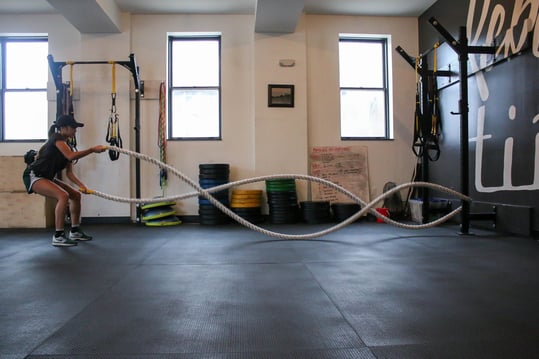
In its November/December 2019 edition of the Health & Fitness Journal, the American College of Sports Medicine published its annual survey predicting the top fitness trends of the coming year. Since 2006, the ACSM has polled fitness professionals across the globe to rank established and emerging trends “using a Likert-type scale ranging from a low score of 1 (least likely to be a trend) to a high score of 10 (most likely to be a trend)” (ACSM).
The 2020 fitness trends survey drew 3,037 responses with 40% of respondents identifying as having 10 or more years of experience in the fitness industry. By polling annually, ACSM strives to give fitness professionals a starting point for evaluating what services, equipment, and practices may best serve their businesses in the new year.
Below are the top 10 trends as ranked by the survey’s respondents:
1. Wearable Technology
Wearables like fitness trackers, smartwatches, and heart rate monitors have earned the top spot on the survey in three different years (2017, 2019, & 2020). ACSM credits manufacturers for improving the accuracy of the data these devices track for keeping them popular. It’s estimated wearables are now a $95 billion dollar industry.
2. High-Intensity Interval Training (HIIT)
HIIT training consists of short bursts of high-intensity exercise broken up by rest periods. While HIIT often ignites debate about its benefits versus potential harm, its popularity cannot be disputed. This training style has ranked in the survey’s top five since 2014, jumping up to #2 in this survey after placing 3rd in 2019.

3. Group Training
The survey defines group training as an instructor-led session with six or more participants. This distinguishes it from small group training. Despite group training’s long presence in fitness, it only cracked the top 20 of the annual survey in 2017. This trend continues to see strong growth as traditional fitness centers adopt group training services to compete with the boutique fitness studios.
4. Training with Free Weights
Training with free weights is new to the survey this year and found immediate success, placing at #4. Previously, the survey included a category for “strength training”, but this was determined to be too broad. Training with free weights was added to cover the practice of training with barbells, kettlebells, dumbbells, and medicine balls, and clearly it’s a popular trend in the industry.
5. Personal Training
Defined as a one-on-one session between a client and a trainer, personal training has placed in the top 10 every year the survey has been published. Its popularity is actually growing thanks to new markets such as virtual fitness platforms, personal training apps, workplace training, and in-home sessions.
6. Exercise is Medicine (EIM)
EIM is an initiative launched by ACSM to incorporate physical fitness more deeply into health care based on the wellness benefits of physical activity. ACSM says the long-term vision of EIM “is for health care providers to routinely assess physical activity as a ‘vital sign’ at every patient interaction, provide brief advice, and refer patients to evidence-based fitness resources.” Since debuting on the survey in 2017, this year’s #6 placement is the highest ranking for EIM.
7. Bodyweight Training
This training utilizes the exerciser’s body weight as the primary means of gravity resistance. By forgoing the expensive equipment, bodyweight training programs are cost-effective services to implement for gyms and studios. Since placing #2 on the 2017 survey, bodyweight training has slowly decreased in rank every year.
8. Fitness Programs for Older Adults
As the “silver wave” of baby boomer retirements washes over the US, the fitness industry is capitalizing by offering exercise programs designed to meet the fitness needs of older adults. In general, baby boomers have more discretionary money than younger populations and can afford additional fitness services. People are living longer and looking to maintain their health to enjoy their retirement.

9. Health/Wellness Coaching
The practice of pairing behavioral science with health promotion and lifestyle medicine programs. “Health/Wellness coaching uses a one-on-one (and at times small group) approach with the coach providing support, goal setting, guidance, and encouragement,” according to the ACSM. This trend focuses on the client’s values, needs, vision, and short- and long-term goals and leverages behavior change intervention strategies. The trend has been on the survey since 2010 as “wellness coaching” but in 2019, “health” was added to better describe it.
10. Employing Certified Fitness Professionals
Debuting at #6 in 2019, this trend speaks to the rising demand for fitness expertise in the marketplace. As the ACSM noted on the 2019 survey, “more certification programs have become accredited by the National Commission for Certifying Agencies and thus allow employers easy access to certification validation.” This pivot toward education and expertise has a positive impact on both consumer experience and professional excellence in the industry.
Want more resources? Download our Fitness Technology Trends e-book to learn the opportunities and risks they’re bringing to the fitness industry!